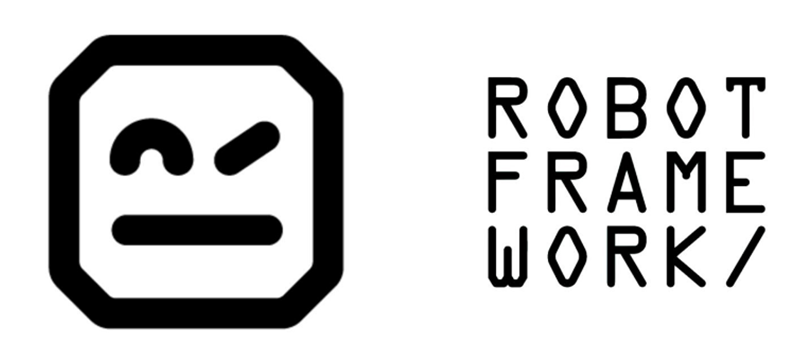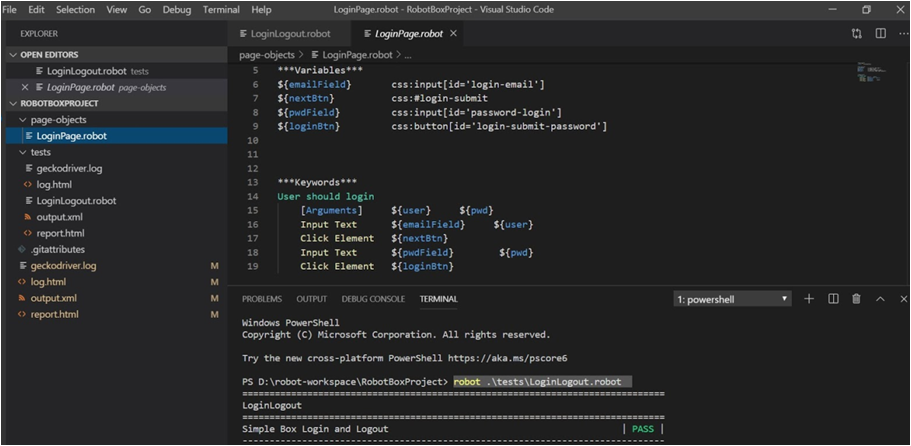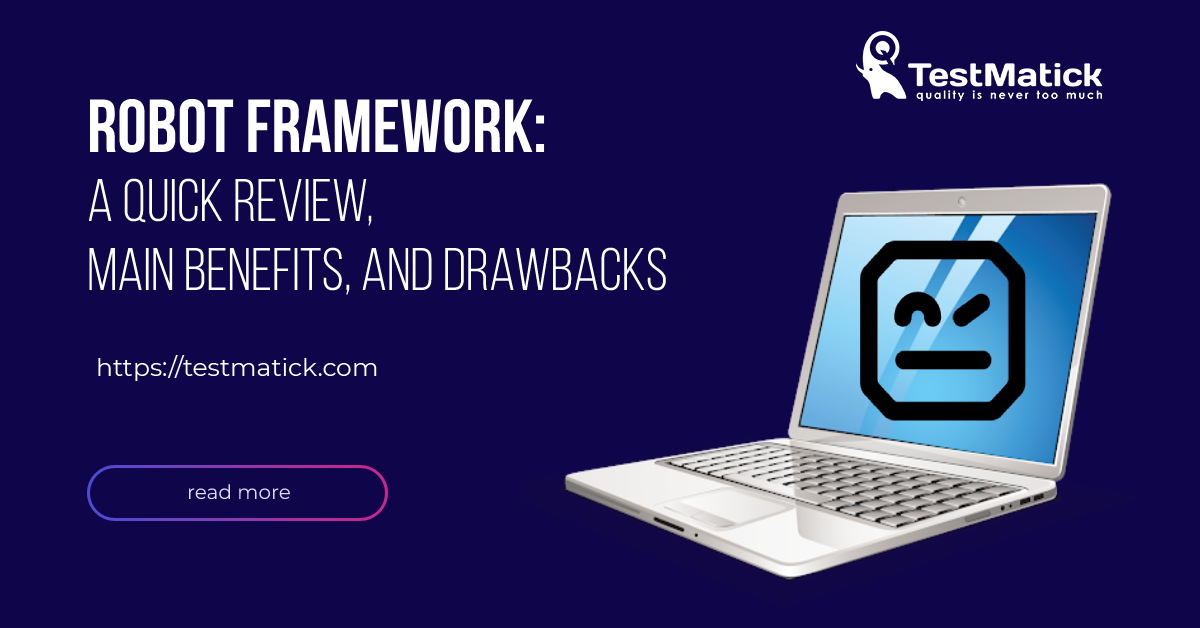Robot Framework is an original keyword-driven framework that was developed in Python for software test automation purposes. To create tests you just need to use keywords that are inside this framework without recourse to programming.

Robot framework
Usage of the Robot framework begins with the loading of a special library. After installation, you can proceed with customized tests (test suites).
Now, let’s see how the most important parameters of this product are displayed.
So, the following options are available for the user:
- Folders with files to describe pages and created tests;
- Drivers for the browsers used;
- Active test interface (test body);
- Console line where you can run the necessary tests and analyze console messages.

Login.Page.robot
Benefits
Minimal Threshold
Since the Robot framework is the typical keyword-driven framework, it requires only basic knowledge of programming. In other words, almost every one of the project team in a quality assurance company can use it. Optionally, it is possible to use variables, functions, and return values.
Full Web / Mobile Support
This product performs with web and mobile (both in the form of end-to-end and atomic tests).
Tags Usage
Users can assign tags instead of tests. Such tags may contain any data to identify test: test ID, a list of components used in the test, and so on. This solution allows creating a connection between tests and software requirements, as well as the correct vector to perform a configuration test run.
High-Quality Reports
To write typical test result documents, you should not have much input. All reports are generated automatically without the need to enter additional commands.
There are options for combining the results of various test runs. Based on these results, the following types of files are created:
- Output.xml – test results in XML format;
- Log.html – test results in the form of HTML structure;
- Report.html – high-level results with no detail.
An Option of Parallel Running
Parallel running is possible with simultaneous usage of the Robot framework and rabot. A typical predetermined application scenario is a simple root command. Without a doubt, all the tests should be designed for this and not interfere with each other.
Drawbacks
No Built-in Debugging Capability
In other words, the product doesn’t have options for the typical arrangement of breakpoints. Because of this, a user needs to display something different in the log or use time slips.
No Amazon Web Services Support
Unfortunately, a popular cloud mobile platform doesn’t support Robot framework tests. As an alternative, one can make use of the SauceLabs portal, and all tests will be run on the Robot framework.
Lots of IDE Difficulties
Sometimes, the product crashes both in the “text editor” mode, and when using the tabular mode. It is also worth noting the impossibility of working with some third-party plugins due to the lack of autocomplete option in some libraries (for example, SeleniumLibrary).
Unstable Support of Third-Party Extensions and Libraries
This framework basically doesn’t support already created libraries. Of course, you can create your own ones, but it makes no sense as it is impossible to use such extensions multiple times.
Conclusion
As we know, any tool is just a means toward some task achievement. Hence, the Robot framework will definitely have both followers and critics.
This framework has both a set of useful functions and unfortunately some technical flaws that may be fixed soon.










Leave A Comment